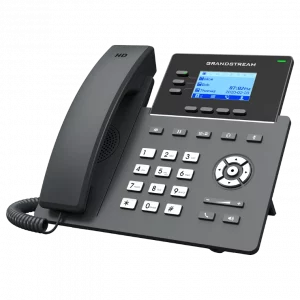Evaluating SIP Providers and SIP Trunking Services
Key Areas To Consider During SIP Provider Selection.

Create a SIP vendor checklist.
When evaluating a SIP Trunk provider, you want to make sure that they have a robust feature-set. One of the most important things to look for is the user portal that will be used to manage your account. You want to make sure the provider has a powerful, easy-to-use self-service portal. Most of the time you spend managing your SIP solution will be in the portal, ordering telephone numbers, checking call detail records, provisioning trunks and viewing billing information. A robust portal that’s painless-to-use will make your life easier when managing day to day functions. Here are some other things you should look for when evaluating a SIP trunk provider.
Automated Provisioning
First and foremost you want to make sure that SIP trunks can be provisioned immediately and automatically. You don’t want to have to wait for someone to get back to you with your SIP trunk credentials. You also shouldn’t need to complete an interoperability form. The entire order process should be automated and SIP trunks should be available to you immediately. In this day and age, it should be a given that this is the case.
Large DID Footprint
You want to make sure that the SIP trunk provider has numbers in your area, or can easily and quickly obtain them via a simple backorder with their carrier. They should also be able to port your telephone numbers as well in a timely fashion (2 weeks max!). A bonus would be International DIDs, available in a number of countries around the world.
Redundant SIP Gateways
You want to make sure that your SIP provider has more than one gateway for routing SIP calls and they should be in geographically disperse locations. In addition, the SIP provider should be ‘releasing the media’ by default, which means that they should only be a proxy for SIP signaling. (The media is the actual audio of the telephone call). Releasing the media directly to the underlying carrier’s closest media gateways enables optimal performance and the lowest latency. Most people incorrectly try and ‘ping’ or ‘traceroute’ the SIP provider’s gateways directly to measure performance. This is not the correct measure of performance if they are releasing the media of the phone call to their carrier. In this case, you are only measuring the response of the signaling server to requests. Since SIP signaling contains so few packets that are processed in milliseconds, the SIP signaling servers could literally be placed halfway around the globe and you wouldn’t have a noticeable degradation in performance.
DID Failover Routing
Failover routing is critical in the handling of inbound call delivery and is a necessary component of a reliable system. You want to make sure that the SIP provider has the ability to route incoming calls to a primary SIP trunk and a secondary SIP trunk. Even better is the ability to also have a PSTN-backup and a PSTN hard-forward as well. This gives you failover capabilities in the event that your primary PBX goes down.
Real-Time CDRs
For testing and troubleshooting, its mandatory that your SIP provider have a mechanism for viewing call detail records (CDRs) in real-time. Calls should be available for viewing as soon as the call is completed.
Supports Both G.711, G.729 Voice Codecs
You’ll want to make sure that your carrier supports a variety of codecs including G.711 ulaw (the most popular) as well as G.729. G.729 is a lower-bit rate voice codec used in bandwidth-limited environments. Some people believe that G.729 is ‘better’ and should be used over G.711. This isn’t the case — G.729 is a compressed codec and by its very nature, voice quality is degraded. While its often difficult to hear the audio differences, it ‘is’ being compressed and for that reason we recommend G.711 when bandwidth is not a concern. G.711 audio calls with associated overhead only consume 85kbps of bandwidth up and down, versus 32kbps for G.729. Most businesses have broadband connections into the megabits, thus making the need for G.729 unnecessary, especially in the US.
Supports T.38 for Faxing
FAX over IP or FoIP has always been a thorn in the side for SIP Trunk providers. If Faxing is important to your business you want to make sure that the provider has a fax-to-email solution for its DID footprint. You also want to make sure that the majority of its DID footprint is T.38 capable. T.38 is the protocol for routing faxes over an IP network, and improves the delivery success rate of faxing. Outbound fax delivery to the US and Canada over T.38 is a huge bonus if you can find a SIP provider that offers it.
Nomadic e911
When evaluating a SIP provider you should make sure they offer what is called ‘Nomadic 911’ functionality. ‘Nomadic’ e911 service allows you to set ANY physical address in the United States as the address to be transmitted on 911 calls. This means your calls to 911 will route to the closest PSAP (Public Safety Answering Point) to your registered e911 address. The address will also appear on the emergency services operator’s screen when you call. You should be able to instantly update e911 addresses on the providers online control panel at any time and have it take effect immediately.
Inbound CNAM Delivery Included at No Additional Cost
Many SIP providers want to charge for incoming callerID Name (CNAM) delivery over the SIP trunk. Even though it may be a fraction of a penny per ‘dip’, those costs can add up especially if you are doing a lot of inbound calls. Look for a provider that includes incoming CNAM delivery free of charge on all of their DIDs.
We hope you consider SIP.US as your vendor for SIP services, but even if you choose another provider, we encourage you to consider each of these areas during your evaluation.


